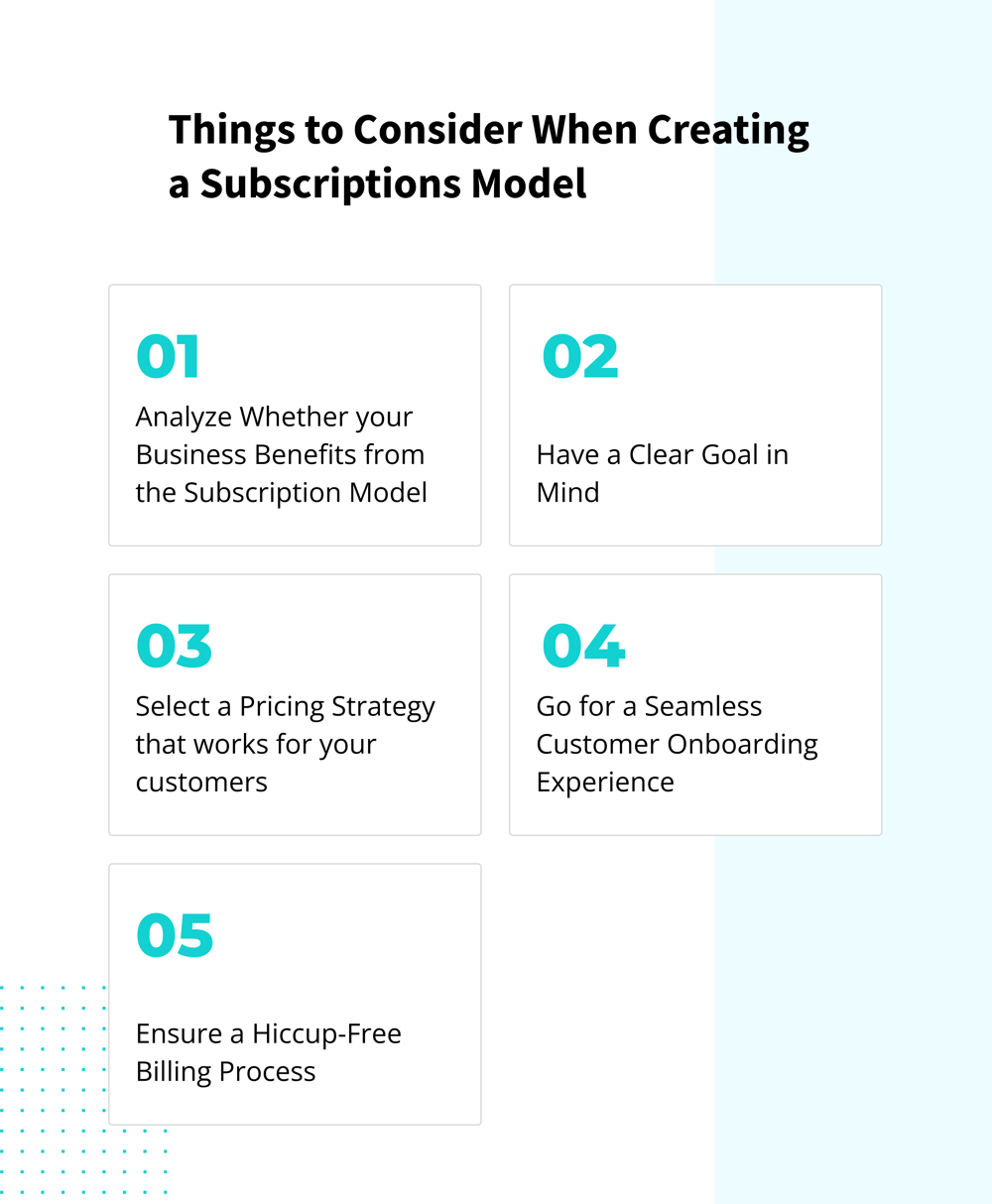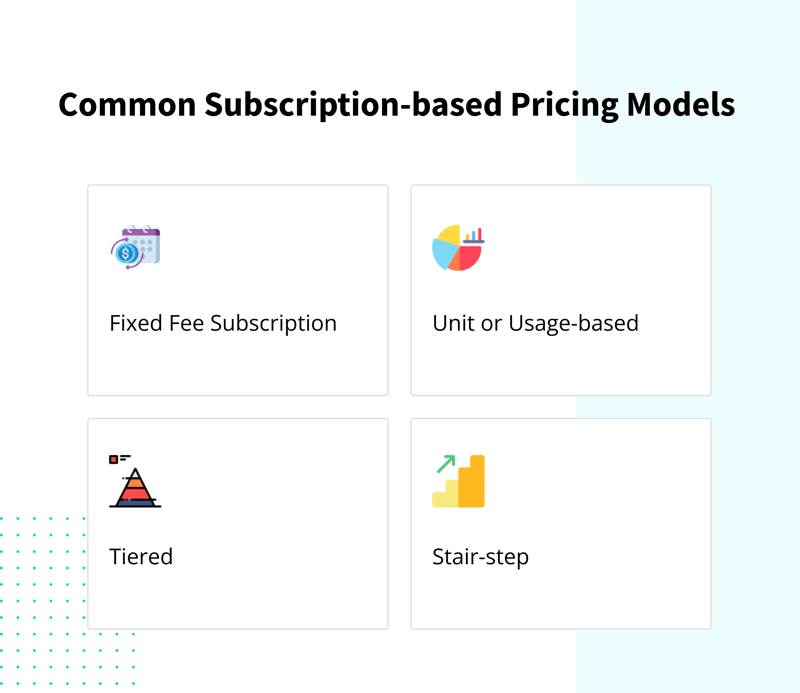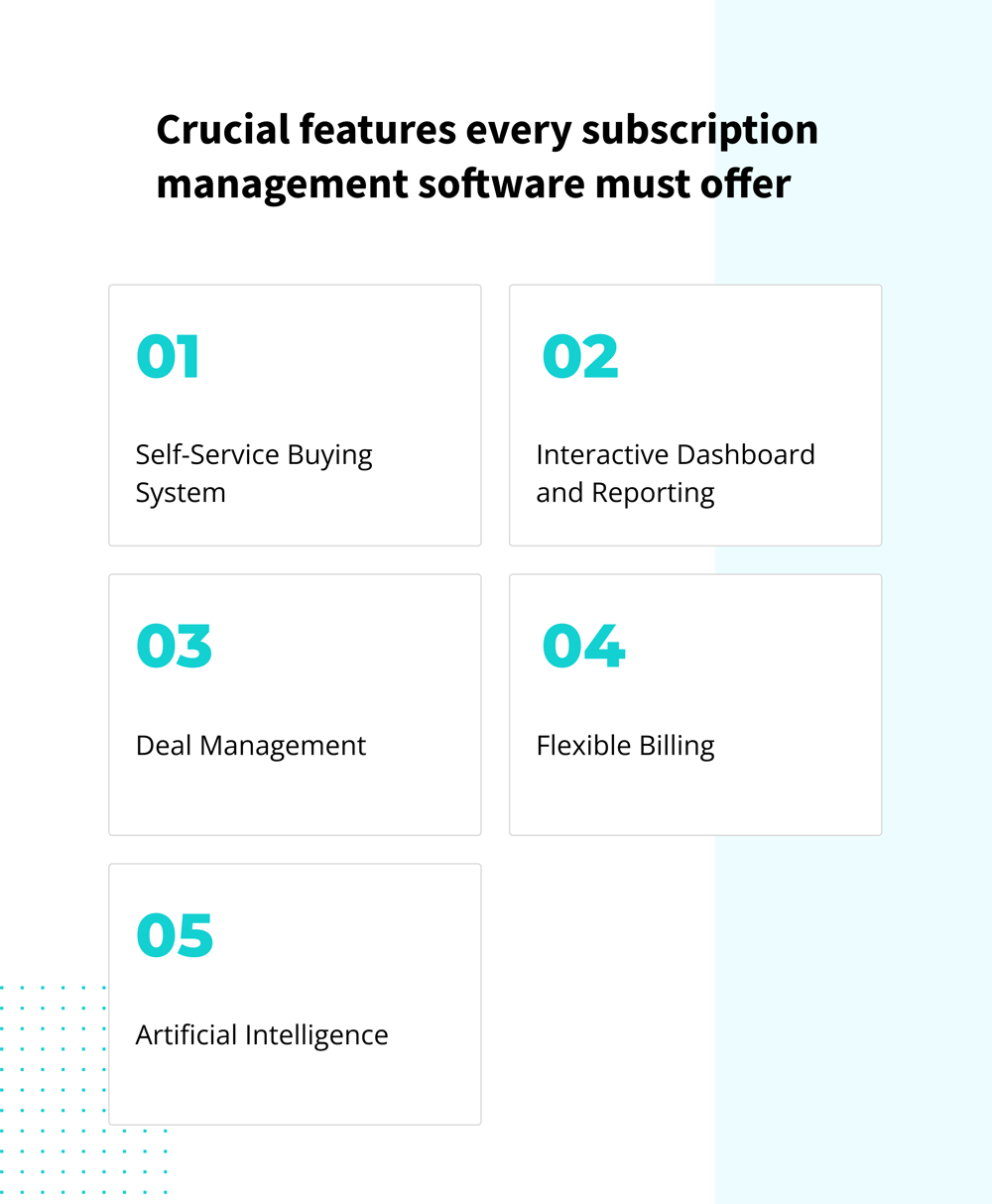A Comprehensive Guide to Subscriptions Management | inai
Subscriptions are everywhere, from Netflix and Amazon Prime, which offer video-based content for a monthly or yearly fee, to Furlenco and LetsShave, which provide furniture for a monthly fee and replenish shaving items, respectively.
But why do subscriptions work, and how can you create a subscription model for your business? Read along to find out.
This blog discusses everything you need to know about subscriptions, how it works, what benefits it brings, and how you can create one.
.png)
Table of content
- What is Subscription management?
- How Does Subscription Management work?
- Most Important Features of Subscription Management Software
- Why Should you Incorporate Subscription-Based Model in your Business?
- Things to Consider When Creating a Subscriptions Model
- How are Subscription and Recurring Payments Different?
- Pros and Cons of Subscription Model
- Why Do Subscriptions Work So Well?
- What are the Types of Subscription Modes?
- What are Some Common Subscription-based Pricing Models?
- How to Track Recurring Subscription Revenue?
- Need Help Implementing Subscriptions in your business?
What is Subscription management?
Subscription management is basically the way how you manage your subscriptions. Everything from issuing invoices and managing communications with customers to handling plan downgrades and upgrades and processing payments (recurring) and refunds comes under the umbrella of subscription management.
The goal is to optimize how you deliver subscriptions and create a seamless customer experience right from when they sign up until they cancel their subscription.
How Does Subscription Management work?
Here’s how a general subscription management software works:
1. Setting up Subscriptions
Usually, the admins set up subscription-based products along with options to pay based on the pricing model the business chooses. After that, they push those products across all self-service channels, such as your website from where the customers purchase the product on their own or contact sales reps for assistance.
2. Sales Reps Get Involved
When customers use the self-service channels for purchasing and request changes to their orders before making the final purchase, the sales reps intervene using the subscription management software. They make the requested changes, such as adding discounts or modifying quantities using the tool, ensuring the customer makes the purchase.
3. Nurturing Ongoing Subscriptions
Once the purchase is made, the customers usually modify their subscriptions using the self-service channels. And the sales and customer success teams gently push or motivate the customers to renew or even upgrade their memberships.
In addition, the backend teams understand customer behaviour and even use AI to determine the right offers for existing customers.
4. Automated Finances
When the customers modify their subscriptions, the transactions are automatically merged in the backend. From generating orders, creating invoices, and managing payments, everything is automated. The manual link of the sales and finance team is replaced by automation which reduces the error margin and ensures the best customer experience.
5 Crucial Features Every Subscription Management Software Must Offer
Here are some crucial features every subscription management software must offer:
1. Self-Service Buying System
An ideal subscription management software must offer an interface allowing B2B consumers to purchase independently without hiccups. Everything, from scrolling through the product to ordering, making payments, and generating invoices, should be automatic, requiring no intervention from your business.
2. Interactive Dashboard and Reporting
You cannot improve if you don’t have access to the right data. So, make sure that your subscription management software comes with an interactive dashboard that gives you insights into the key KPIs and consumer data. This way, you can keep an eye on important consumer data and ensure continuous improvement.
3. Deal Management
Subscriptions can be profitable, but for that, you need to make sales. And to make that possible, you’d probably need your subscription management software to offer deal management features. Deal management helps your sales reps to keep an eye on deals and close them faster if there’s a hiccup.
4. Flexible Billing
Your subscription management software must offer flexible billing based on the types of customers your business might attract. For instance, there should be ample options when it comes to choosing billing cycles, promotions, discounts, trial periods, etc. This way, you can cater to the needs of all your customer using a single software.
5. Artificial Intelligence
While this can be an optional feature, AI can really set you apart. Artificial Intelligence can help your sales and finance teams predict risks by identifying and reporting unusual patterns. And this way you can be prepared for anything beforehand.
Why you should Incorporate a Subscription-Based Model in your Business?
Here’s why:
1. Encourage More Customers
When consumers are faced with two options: pay the total amount for, let's say, a car or put it on a payment plan, most choose the latter. Why?
Choosing the latter helps them access the product almost immediately without paying much. And this also helps them manage their other expenses properly.
Surprisingly enough, that's the whole concept of the subscription models. Subscription models attract more customers as the entry point is easy, i.e., they have to pay very little to access quality products/services instantly.
Also, opting for a subscription model doesn't disturb your consumers' finances much. And this further encourages them to choose the subscription model.
2. Ensure a Steady Cash Inflow
You'll automatically make more money when more customers buy from you. This means you'll get a better and more steady cash flow each month. The expenses that earlier had to wait because payments weren't regular can be easily met with the subscription model. And all this will help you with better cash flow management.
3. Allow Businesses to Predict Revenue Accurately
If you can predict your revenue accurately, creating far-sighted plans becomes easy. As a business, you can manage your inventory and finances better and allocate the resources accordingly. And that's what subscription management helps you with.
As the customer pays in a recurring (usually monthly) fashion, you can predict your business's revenue in a particular month. To calculate MRR or monthly recurring revenue, multiply the number of subscribers with the monthly subscription amount per month.
So, if you have 100 subscribers and charge $5 monthly from each, the RRV will be $500.
4. Earn More Via Cross and Up-Selling
The subscription model allows you to engage more with your customers. Be it weekly or monthly newsletters, customer support, or notifications about new additions to your service. This builds trust among your customers, making it easier for you to sell additional services.
In addition, once the monthly or recurring payment becomes a part of your customers' finances, they'll be more likely to buy more from you. This way, you can cross and up-sell to your customers, improve overall customer lifetime value and earn more.
5. Scaling Businesses Becomes Easy
Scaling a business is about adding new features and expanding your customer base to increase revenue eventually. While scaling can be a nightmare for some companies, it's easy for those following the subscription model.
Let's say you add more features to your product or service to suit the needs of more customers. Now, this will automatically increase the overall cost of your product/service.
Should you follow a one-time payment model, you won't be able to scale at a reasonable rate as prospects may not be ready to spend X amount of money all at once.
However, if you follow the subscription model, it becomes easy as customers can opt for a weekly or monthly recurring payment which won't impact them much.
If you offered the service at $12 a month earlier, you could increase it to $15-17 a month without impacting customer relations. And thus, you'll be able to scale better.
5 Things to Consider When Creating a Subscription Model

1. Analyze Whether your Business Benefits from the Subscription Model
Transitioning to a subscription model is a big step. Therefore, you must ask yourself this question:
Do we sell products/services the customers might need regular access for?
- Your answer would be yes, if you sell software tools, or ongoing services such as digital marketing, consulting, etc.
- Your answer would be no if you sell something like cakes, edible items, or books.
Only if you find that your business would benefit from the subscription model should you continue with the next steps.
2. Have a Clear Goal in Mind
Once you determine that the subscription model will ensure growth for your business, the next step should be setting a goal. It could be retaining existing customers, attracting more customers, improving lifetime value, or increasing monthly revenue.
Having a clear goal in mind will help you structure the pricing better. And if you do that right, you will benefit from the subscription model.
3. Select a Pricing Strategy that works for your customers
Once you have a goal, you must choose a subscription pricing strategy. For instance, if you want to expand your user base, you'd like to create a pricing model that offers a decent discount to motivate new users to sign up.
Initially, you can rely on one subscription package. However, as you learn more about your customers and their preferences, you can add new packages that meet the needs of different segments.
4. Go for a Seamless Customer Onboarding Experience
A seamless customer onboarding experience is necessary if you want your customers to stay engaged and keep buying from you. It should be simple and convenient for the customers.
However, how you create your customer onboarding process depends on what you're selling. For instance, if you're selling a physical product, you could e-mail your customers. And if it's software, you can allocate a dedicated support team member or add visible instructions for your customers.
Here's a resource on customer onboarding you might find helpful.
5. Ensure a Hiccup-Free Billing Process
You can get multiple subscriptions if you have a reliable product/service and follow the steps above. And the customers will also go for renewals. So, you need to ensure that the billing process is as seamless as possible.
For starters, you can tweak your billing system to accept recurring or periodic payments. You can then ensure that customers don't have to cycle through several links to renew their subscriptions.
Renewal is your chance to shine. It helps you engage better with your customers. Furthermore, you could provide extra features or bonuses for customers who have renewed their subscriptions for a long time.
How are Subscription and Recurring Payments Different?
Recurring payments offer a convenient payment system for businesses and consumers. The customers need to go for a one-time setup and provide their payment details (debit card or credit card) that are stored on your system. Your system automatically transfers a specific amount from the customer's account to your business account on a set date.
This system allows businesses to receive regular customer payments without sending annoying notifications. Also, the customers don't have to worry about forgetting to pay for the service and losing access as the payment is automatically deducted on time.
On the other hand, subscription payments are a revenue model that allows businesses to improve cash flow, bring more customers, and scale their business efficiently.
However, this payment model offers more flexibility to the customer. The customer can choose from manual and automated payments, unlike recurring payments, where automatic payments are the only option. Also, the customer can choose from various payment methods, including debit/credit cards.
What's more, the customers' payment details aren't necessarily stored on the platform. And this kind of makes the customers feel safer.
All in all, recurring payments offer automated payments and limited payment options. And subscription payments provide both manual and automated options and better payment options which means more flexibility.
Good read: What is the Difference Between Recurring Payments and Subscription Payments?
Pros and Cons of the Subscription Model
Here are the Pros and Cons of a Subscription model to help you decide whether it’s right for your business.
Pros of the Subscription Model
-
Can Ensure Predictable Income: The subscription model allows you to accurately predict your monthly or yearly revenue. This way, you can plan your finances better and determine if your financial goals are being met.
-
Competitive Advantage: If none of your competitors has adopted the subscription model, you can enjoy the competitive advantage. This will be good for your brand’s image and for your business's bottom-line.
-
More Accessible: The subscription model allows you to make your products/services more accessible, i.e., more people can afford your services which improves the overall revenue you make.
-
Better Customer Relations: The subscription business model allows you to stay connected with your customers for extended intervals. You can interact & engage with your customers, understand them and their pain points and retain them for longer.
Cons of the Subscription Model
-
High Churn: You may benefit from the subscription model because it offers an easy entry point. However, at the same time, it also makes it easy for customers to cancel whenever they wish. And this can increase the churn rate. But you can keep it under control by offering your customers good value and a great experience.
-
Competition: While you can get a competitive advantage by choosing a subscription model, it’s highly likely that your competitors are already using it. You may have to bring something more unique and valuable to the table to make your business stand out. And this can cost you more time and money.
-
Uncertain Income: When we said the subscription model offers predictable revenue, it was for established businesses. For startups, it could be a bumpy ride as, initially, people are trying out your service, and there could be numerous cancellations leading to uncertain income.
Why Do Subscriptions Work So Well?
Subscriptions are a part of a bigger picture known as the membership or subscription economy. It indicates a shift in mentality from ownership to access among businesses and customers. And here's why it's working:
-
Community: Subscriptions help build customer networks. This customer network automatically helps generate business leads via referrals, ensuring consistent revenue.
-
Subscriptions: The subscription model allows customers to access quality services at an affordable price for a long duration. This helps businesses onboard more customers and retain the existing ones for a long time, ensuring a predictable recurring cash flow.
-
Increased loyalty: Subscriptions regularly offer customers value, fostering a relationship between the customers and the business. This leads to customer loyalty which means better retention rates.
What are the Types of Subscription Modes?
While there are numerous subscription models out there, they broadly fall under two types:
-
Subscription model offering access to a product: This subscription model is used by companies that provide access to their software, written content, videos, etc.
-
Subscription models offering repeat services: This subscription model is used by companies primarily dealing with physical products. For instance, a peanut butter company that replenishes the package every 15 days indicates repeat service.
What are Some Common Subscription-based Pricing Models?

-
Fixed Fee Subscription: Fixed fee or flat rate is a subscription model wherein the customer pays a set amount periodically (according to the billing cycle) in exchange for your services. This model works best for companies with a single buyer persona and limited features.
-
Pay-As-You-Go or Unit or Usage-based: In this subscription model, there isn't any fixed fee. What customer pays depends on what services or products they use.
-
Tiered: Customers have different plans to choose from in a tiered subscription model. Companies with different target audiences with different needs opt for this subscription model.
-
Stair-step: In this subscription model, different packages are predefined. However, the customers pay a set price if they use the services within that package. And if they use more, they enter the other package and thus pay a different fee. For instance, a company might charge its users $100 for parsing 1000 documents and $150 for 2000 documents, and $500 for unlimited documents.
How to Track Recurring Subscription Revenue?
Tracking recurring subscription revenue is quite crucial for your business as it helps you track performance, forecast revenue, and manage your finances better.
To track recurring subscription revenue, you can simply calculate MRR or monthly recurring revenue. Here’s how you can calculate it:
Monthly Recurring Revenue – Subscription revenue generated by new customers + subscription revenue from existing customers + license upgrade and addon fee from existing customers – (revenue lost from customers who left + revenue lost from removed add-owns or downgrades). Here’s an image for better understanding:
.png?width=1000&height=1162&name=Re-work%20(1).png)
You can also calculate your annual recurring revenue or ARR for tracking your recurring subscription revenue. To calculate ARR, you just need to multiply MRR by 12, and there you have it.
Need Help Implementing Subscriptions in your business?
While setting up a subscription model may sound easy, It's much of a chore, especially when you don't have an experienced engineering team. And that's when inai comes into the picture.
inai is a payment unification platform using which you can set up your subscriptions, create plans, and manage them efficiently on the dashboard.
You can take your business global by integrating different payment gateways and payment methods, all with a few clicks. Additionally, inai allows you to set up recurring billing automatically, enabling quicker and more accurate results.
Want to know more about how experts at inai will help you integrate and manage subscriptions? Book a free demo now!







Let’s get started








.png?width=123&height=71&name=inai%20logo%20-%20dark%201(1).png)
